The Twilight of Carnegie Deli
The last mountains of pastrami will go out on New Year’s Eve
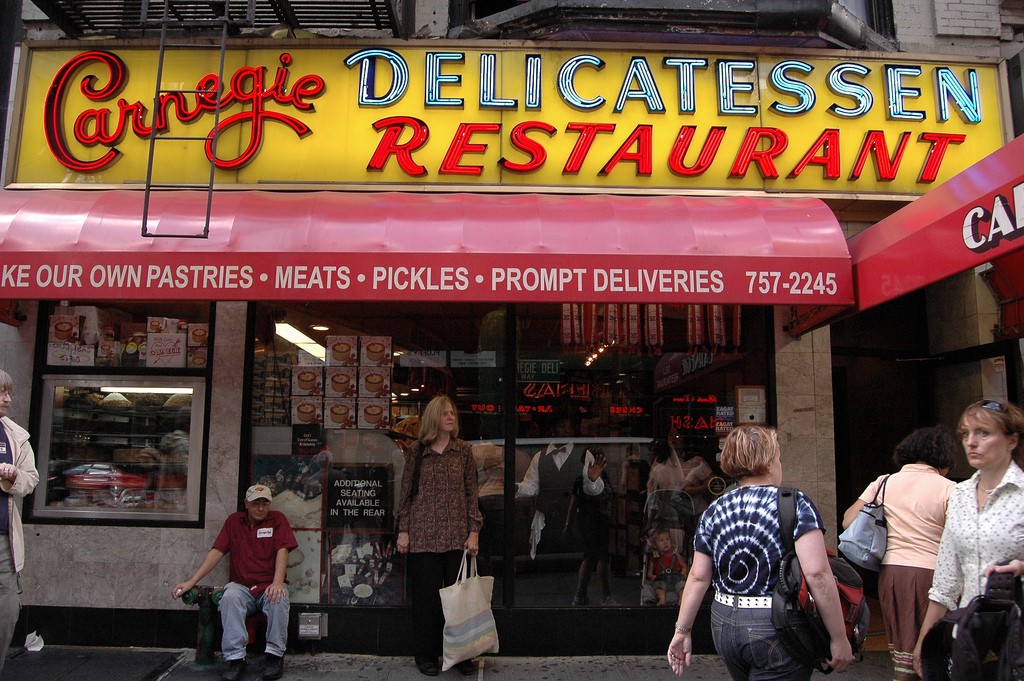
“You never know what’s going to happen here at the Carnegie Deli, particularly on New Year’s Eve.” Murray Trachtenberg, the restaurant’s longtime general manager, was teasing another night of gruff service and obscenely portioned smoked meats when he said this to the New York Times in 1991. But this year, after seventy-nine years, the Carnegie Deli will be serving its last sandwich on December 31st.
Carnegie Deli is a monument to relentless schtick and cultural nostalgia. It’s a Disneyland that was once real. You can feel the ghosts, the steady march of Judaism toward the American mainstream. Celebrity photographs line its walls, many questionable in their inclusion (The Fat Jew sits neatly behind the cash register between Rihanna and Kate Upton).
Like anything good in New York, it all starts with the line. I walked into a whisper-scream dispute between a couple from Wisconsin.
“I don’t want any of this,” the man said, running his finger down a takeout menu. “Why would I pay this much for a sandwich?”
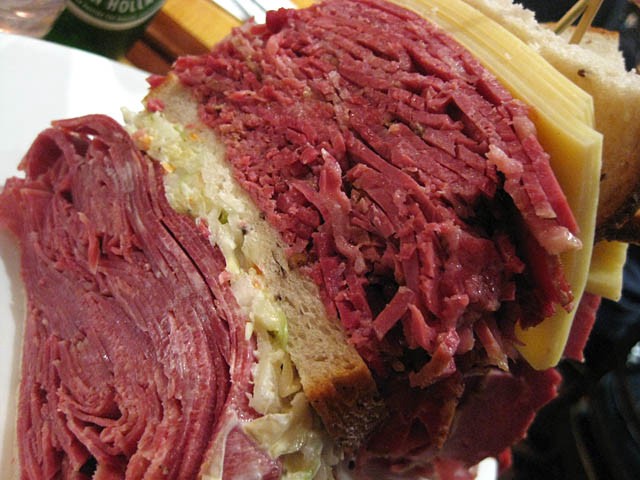
Rich, a connoisseur of blintzes and the only self-professed local in line, brought two friends along. “I’ve been coming here since I was six. Fifty years.” I asked where he’ll go now that the deli is closing. “Nowhere,” he said. “This is the end. I mean, there’s Katz’s, but it’s not the same. Maybe, now that it’s closing, they’ll finally give me the recipe.”
“I have a friend who drives in from Central Jersey for the corned beef,” another woman said. “I can’t tell the difference.”
When Dani from Illinois heard an estimate for how long the wait would be, she blanched. “Forty-five minutes?” she said, making a face like someone just rang the doorbell to tell her that her son died in a war. “Isn’t there another option? My feet are so tired.”

Carnegie Deli is the last in a lineage of Midtown giants. After rent increases forced the Stage Deli — a longtime sparring partner just one block south on Seventh Avenue — to shutter its doors in 2012, Carnegie has monopolized the market for $30 sandwiches in the area. It represents the glitziest branch of New York delis, the culmination of what food critic John Mariani once called “American bounty in its most voluptuous and self-indulgent form.”
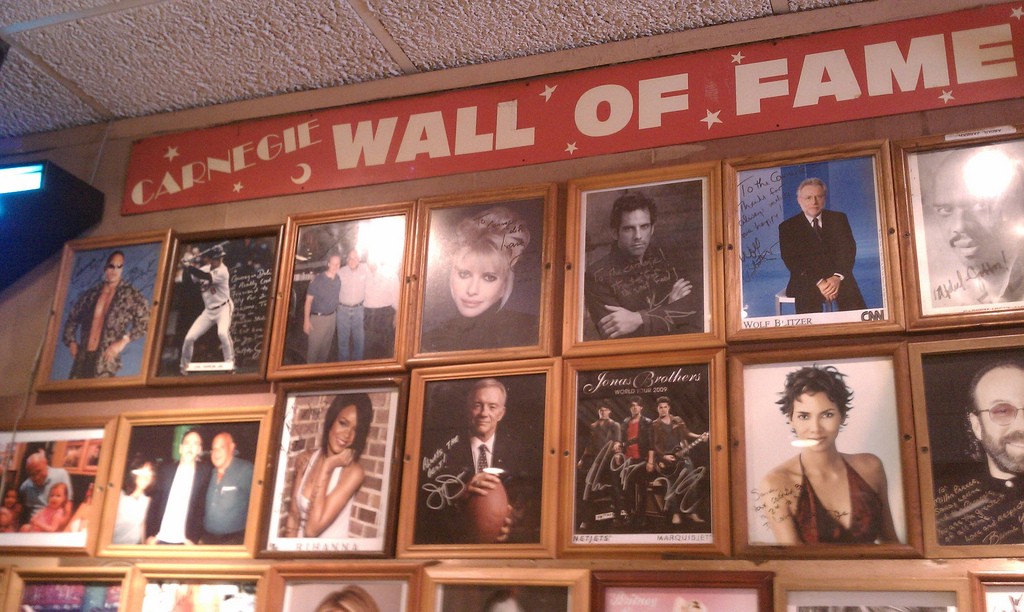
“The Carnegie Deli was the last link to it,” said David Sax, author of a wonderful ode to pastrami called Save The Deli. “Of course, it was more of a kind of schtick-ified version than it had been in the past when that was real. That neighborhood had changed, and it was still holding on to that feeling. The comedy writers, the great classic world of Woody Allen and vaudeville and Broadway, Mel Brooks and all that, had long since left for other parts of the city or Los Angeles.”
After an influx of Eastern European Jews immigrated to the Lower East Side of Manhattan in the late 1800s, delis established a deeper presence among the tenements. They evolved from German roots, hawking a combination of smoked meats, sausages, prepared meals, and pickled vegetables. The food — a cultural mishmash of Germanic, Southeastern European, and Russian cuisines — became commonplace, especially on holidays and special occasions when families would gather around the table to nosh on corned beef, brisket, and pastrami, always with pieces of caraway seed-dotted rye bread.
This scene, the warmth and comfort of family, is what some visitors to Carnegie Deli told me they wanted to experience, but the OG delis were not destination restaurants. They were hyperlocal, much closer to what we now know as bodegas. There were typically few seats, but the counters were overstuffed with pretty much any culinary item one could imagine, including mostly forgotten specialties like tongue and gribenes.
As decades passed, Jews became more entrenched in American life. They earned more money and were happy to spend it on the biggest sandwiches known to man. The mid-century sandwich said, “We’ve made it — now take half home with you and enjoy.” Midtown Manhattan became a cultural space for restaurants like the Carnegie Deli, which stayed open all night, had menus thick as Philip Roth novels, and, in Carnegie’s case, an owner who made sculptures out of chopped liver to commemorate famous wars.

The culinary legacy of Carnegie Deli starts and ends with the meat. Pastrami, real pastrami, comes from a time- and labor-intensive process. To make it the traditional way, a beef brisket is smothered in pink curing salt, a method that brings out its flavors and gives it color and texture. Spices like black peppercorn and coriander seed, blended according to closely-guarded recipes, are rubbed into the meat, which is then smoked for around two weeks. It is usually boiled to finish and then kept in steam trays before — hot, but not too hot — it’s carved and served.
Pastrami may be a lasting innovation of the Jewish-American deli, but the quality standards in its production have degraded over time. Companies like Boar’s Head manufacture a phosphate-injected version that is far easier (and cheaper) to mass produce. Subway is currently advertising a pastrami sandwich that tastes closer to synthetic roast beef.
“People won’t spend as much on a pastrami sandwich as they might on a steak, even though the actual cost to make those things are probably about the same,” said Noah Bernamoff, the founder and owner of Mile End, which is the center of a new-wave deli movement in New York. “The cost of a steak cut from the rib loin of a cow costs about the same amount of money as the end-cost of making pastrami from a lesser-expensive cut of meat like brisket. It’s the same end-cost, but we’re not allowed to serve it at steak prices because Boar’s Head exists in the market and pulls everything down.”
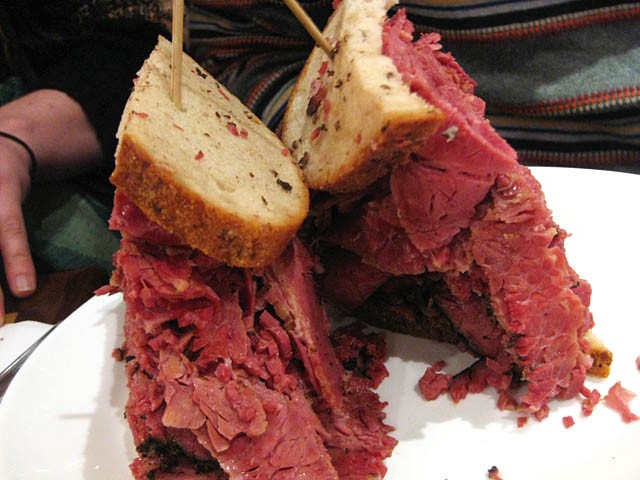
The gargantuan sandwiches pedaled by Carnegie and its ilk often include more than a pound of meat, yet cost less to produce than what nü-Jewish delis like Mile End and Harry & Ida’s are serving with eight ounces. (See also: Wexler’s in LA, Caplansky’s in Toronto, Kenny and Zuke’s in Portland, and many more.) It’s the age-old quantity versus quality debate, and as traditionalists like Carnegie cut their last slices, delis which use the best-possible ingredients and simplified, time-intensive recipes are succeeding with healthier meat crafted in smaller batches. “People come in and look at our sandwich and go, ‘What? This isn’t a deli sandwich,’” continued Bernamoff. “But no, it is a deli sandwich. You’re just so used to buying one that you eat now and you eat tomorrow.”
It is certainly better, but it’s not the same. For Jeff Parker, owner of Ben’s Best in Rego Park, tradition is tradition. What Carnegie put on the plate will be considered the classic version of what chefs like Bernamoff have updated for the 21st century. “If you want a Peter Luger steak, you go to Peter Luger,” Parker said. “That’s the one you want. If you want to go some place where they’re gonna go au poivre or put a bearnaise sauce on it, well, that’s another set of circumstances.”

Under a graveyard of forgotten sitcom actors, two couples in head-to-toe North Face were surrounded with enough food around them to last a week. I asked why they ordered four sandwiches when two would have been sufficient, especially with the blintzes and cheesecake gathering dust in front of them.
“We had no idea,” one of the wives said. When I pointed out if they shared, they’d be charged three dollars extra per person — the store’s flagrantly manipulative “sharing charge” — they thought I was lying. After their meal, the husbands stood to pat their server, Al, on the back and shake his hand. They also flagged down John, the general manager, to thank him.
I later asked John why they were closing; Marian Harper, a second-generation owner of the deli, owns the building. There’s no greedy landlord to blame, and the ever-present line down Seventh Avenue is proof of an (un)healthy demand for sandwiches named after Woody Allen. “For ten months, she wasn’t here, and she got a taste of what it’s like not being here all the time,” he said, directing me to their media relations department.
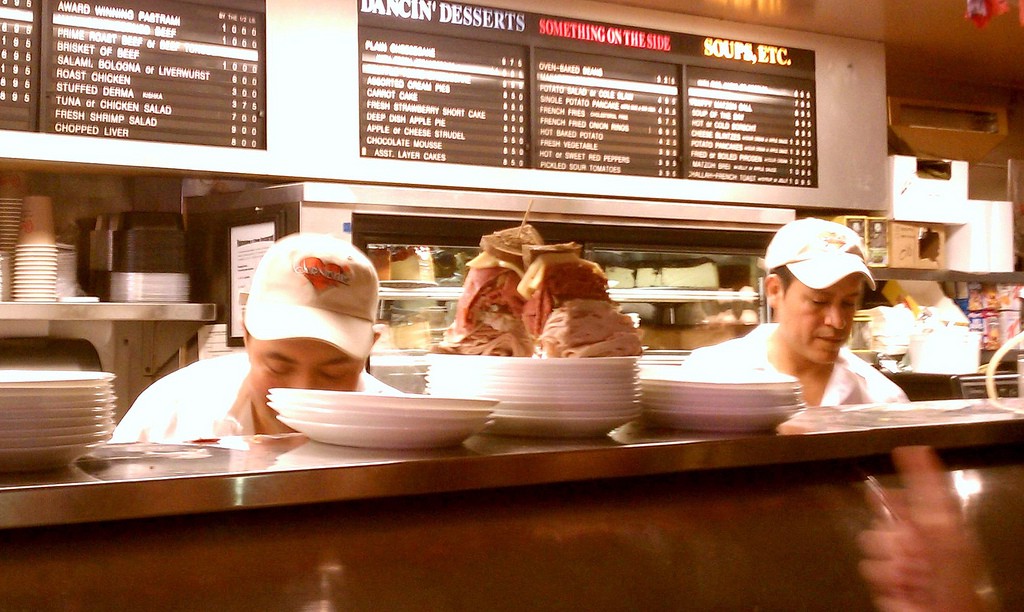
It’s an excuse that glosses over what makes the predicament of the Carnegie Deli so fascinating. That ten-month sabbatical was due to a forced shutdown after, in April 2015, ConEd discovered the restaurant was operating with an illegal gas hookup. There was no punishment beyond a retroactive $40,050 bill and a $2,600 fine to the Buildings Department. The year before, the deli entered a $2.65 million settlement with present and former waitstaff, who sued after being cheated out of wages over the previous decade. Around sixty employees, many of whom returned to the restaurant after it was shuttered for nearly a year, will now be out of work with its closure.
Judge Matthew Cooper of the Manhattan Supreme Court harped on the restaurant’s penchant for wage theft during widely publicized divorce proceedings between Harper and her business partner, Sandy Levine. In August 2015, he referred to Levine as a “shyster of smoked meat” and claimed the couple had made “millions of dollars on the backs of dishwashers and cleaners and pastrami slicers who make as much in a year as they’ve made in a day or two.” A major catalyst for the divorce was an affair between Levine and Penkae Siricharoen, a longtime server at the restaurant, who, while living above the deli in a rent-stabilized apartment, used stolen recipes to open an unsanctioned version of the Carnegie Deli in Thailand. In September 2015, Levine settled the divorce and a $10 million fraud suit for an undisclosed sum.

“It was an outlandish place,” said Sax. “It was packed. It was overpriced. It was kitschy. The portion sizes were idiotically large. Everything there seemed like a performance, and that’s what was great about it. I don’t think you can ever replicate that. It was the nature of where it was, who owned it, and how it evolved. People will say there are better tasting Jewish delis. There are more homey Jewish delis, but are there more fun Jewish delis that existed than the Carnegie Deli at its peak when it’s absolutely packed with people from around the world? I don’t know.”
“I think it’s a shame,” said Jay Parker. “It was a tremendous institution. Its passing diminishes the industry, in my estimation.”
“I don’t want to be negative,” said Bernamoff. “In Yiddish or Hebrew there’s a notion of lashon hara, the evil tongue, so I’m sensitive around using it with my deli brethren who, for better or worse, are dying.”
Carnegie Deli will continue to serve as a model of both golden-era New York (with its attitude and schmaltz) and Americana (with its altars to celebrity and portion size). In its first week back in business after the closure for siphoning illegal gas, one of the deli’s customers was Mayor Bill de Blasio. He posted a picture of his favorite sandwich with a single-word caption: “America.”
